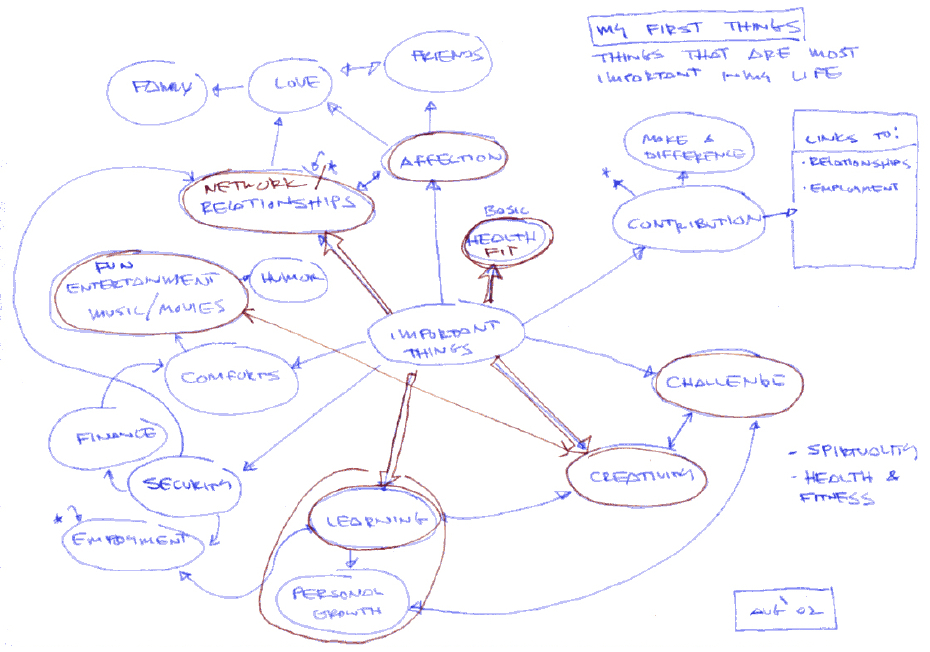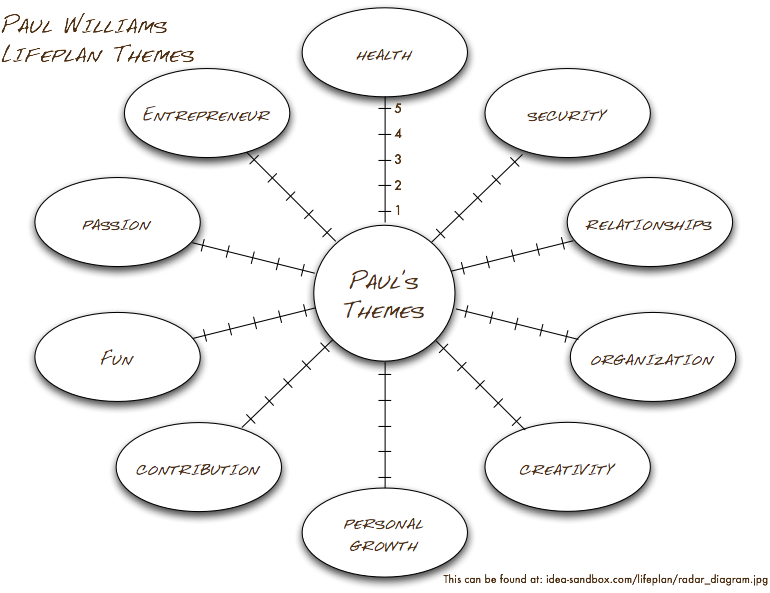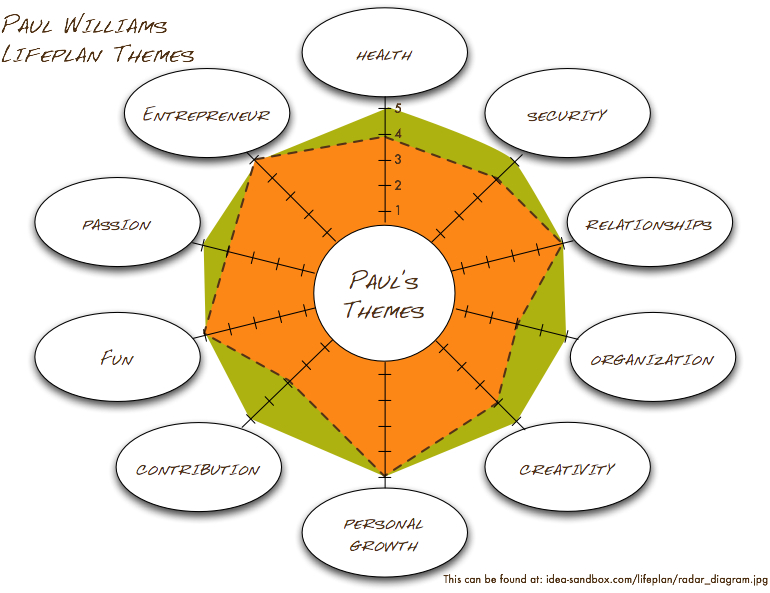
Are you trying to figure out what to do with your life?
What to be when you grow up?
This installment of “Sand for Your Inbox” is a special edition. I have handcrafted a proven technique that will help you answer these essential questions. (No, really!)
Some years ago, I was trying to figure this out for myself. I did a bunch of reading, culled my self-help resources, and created a process to create a Life Roadmap. My Roadmap put me on course to launch Idea Sandbox and make critical decisions in my personal and work life.
Outlined below is the very process I used from start-to-finish.
There is nothing more satisfying than getting in the driver’s seat of your own life and doing the things about which you are most passionate.
Please share your comments in the reactions section at the end of the article.
Happy Driving,
Paul
Pave Your Life Roadmap
This process will (1) assists you in identifying what you’re most passionate about and (2) help you incorporate those passions into your daily life. By living your passions, you’ll be a happier and more fulfilled person!
The key steps to crafting your Roadmap are…
- List Your Passions – Make a list of all the things you are passionate about.
- Identify Values – Group your passions into themes.
- Set the Situation – Determine what conditions should exist for you to feel you’re fulfilling your Values.
- Reveal Action Steps – Identify what daily activities you should be doing to fulfill your Values.
- Visual Report Card – Draw a graph to visualize and assess your current status. (Don’t worry, no drafting tools required).
- Take Action / Follow Your Roadmap – Now that you have the keys. Get behind the wheel and follow this plan to drive your life.
Tips as you start:
- Get yourself a stack of small-sized note cards, or a notebook, or a journal. Whatever works for you to have something you can come back to.
- Take your time with this project, but give yourself a deadline. You should give yourself time to reflect, but not so much time you forget and don’t follow-up and complete your plan.
- Don’t try to do this in one sitting. With each step, plan on starting the process and returning with a fresh mind. Letting each stage incubate in the back of your brain will provide you with better results.
Find a comfortable chair here we go!
Step 1. List Your Passions
Objective: Create a list of things you are passionate about.
Make a list of the things you are passionate about. If you’re using index cards, put one passion per card. Keep going until you’ve reached 100 passions.
Ask yourself:
- What do I enjoy doing?
- What excites me?
- What would I love to spend more time doing if I only had the time?
- If I could only do one thing for the rest of my life, what would that be?
Forget your responsibilities at work, home, or with family. This isn’t a ‘have to do’ list; this is a ‘wish I could do’ and ‘love to do’ list. There are no right or wrong answers – these are all you.
If you know how and like to idea map, they are beneficial for this step.
Step 2. Identify Values
Objective: Discover commonalities and group passions into recurring themes.
Next, review your passions and group them into common themes. Look for recurring topics and lump these together. (This is where index cards come in handy).
The book To Do, Doing Done by Snead & Wycoff has a great list of values, including:
| Achievement | Adventure | Beauty |
| Career Growth | Community | Family |
| Financial Security | Freedom | Friends |
| Frugality | Fun | Generosity |
| Growth | Health & Fitness | Honesty |
| Inner Peace | Joy | Leadership |
| Learning | Love | Music |
| Nature | Organization | Personal Development |
| Productivity | Spirituality | Travel |
| Wisdom |
While you may have loads of interests and passions, combining into value groups helps you narrow your focus on what truly matters most.
Don’t worry if it seems you have too many themes for your VALUES. After you’ve created the first round, you can pare down and combine. I had 19 different themes and finally ended up with 10.
My key values are Security, Relationships, Organization, Personal Growth, Fun & Entertainment, Contribution, Entrepreneur, Passion, Creativity, and Health.
Here is an idea map I created to view and group my Values.
Before
After
Identifying values is critical. They represent activities that you care about most. If you do things that match your values, you will feel more fulfilled.
Step 3. Set the Situation
Objective: Determine what circumstances (new and existing) will allow you to fulfill your Values.
Now we’ll figure out what situation or circumstances you should find yourself that will make you feel like you’re fulfilling your Values. These are performance indicators. Their existence indicates you’re performing in your Values.
Answer this question:
If I had a life filled with [your theme here], I would: _____________.
The last part of the sentence will reveal these performance indicators.
For example, for my theme “CREATIVITY,” my five performance indicators are:
If I had a life filled with CREATIVITY, I would:
- Think up new ideas,
- Solve problems,
- Create neat ideas that work,
- Create new ways of doing things, and
- Express myself with art, music, and writing.
I recommend coming up with at least five (5) answers. It is okay if these match up with your original list of passions. But push yourself. There may be a big difference between what you are doing and what you should be doing.
Step 4. Visual Report Card
Objective: Gauge how well you currently satisfy your Values. Determine which values you should focus on first.
Now we want to compare your values and see which you’re fulfilling and which need focus.
For each value, you’re going to ask yourself:
“Self, on a scale from 1 to 5, (5 being the best, 1 being the least), how am I currently doing in fulfilling these performance indicators?”
Repeat for each value and mark your scores on a radar diagram. A radar diagram is a round graph with spokes that measure each piece of information. (It looks like a radar screen). It is helpful to see how consistent or balanced your information is.
The values marked with lower scores need focus. A score of “5” represents the values you are fulfilling. Theoretically, when you mark scores of all 5’s, you’re at the height of following your passions.
You can download a blank template here (PDF), or create your own.
Here’s my completed radar diagram. I’ve shaded my assessment in orange. The green area represents all 5s. So you can see I feel pretty good about my Entrepreneur, Relationships, Personal Growth, and Fun Values, but want to work on my Contribution and Organization Values.
Step 5. Reveal Action Steps
Objective: Determine what you should be doing daily – enabling activities – to satisfy your values.
If this life plan were a business plan, your values would be your objectives and performance indicators your strategies. Now we need to figure out the tactics, the enabling activities—tasks to do daily.
Using your radar diagram as your guide, start with the value you indicated most needs improvement and the corresponding performance indicators.
Figure out what tasks you need to do to bring to life the performance indicator.
Take a look at my value of CREATIVITY as an example.
As I listed earlier, the performance indicators I have identified for this value are:
- Think up new ideas,
- Solve problems,
- Create neat ideas that work,
- Create new ways of doing things, and
- Express myself with art, music, and writing.
The last one is the one I want to work on: “Express myself with art, music, and writing.”
I’ve narrowed the focus of this one to art and writing. I’m able to exercise my passion for writing through this newsletter, in my blog posts, and other writings. But, I want to be a better writer. So enabling activities could include one or all of the following:
- Sign up for a writing class,
- Get feedback from my English teacher friend,
- Buy a book on how to improve my grammar.
The art part? I majored in art in college and love drawing and painting. However, I haven’t painted in years. For Christmas, I asked Santa for art supplies. I received an art easel and new supplies to do pen & ink drawings and watercolor. I’ve already started to enjoy using them and feel better.
When I brainstorm with clients, I often draw images instead of simply using words. Also known as graphic facilitation. This helps make topics easier to understand AND feeds my passion for drawing… This also influenced how I built Idea Sandbox, and is part of what makes my job so much fun. See how this all comes together?
To help work this step out, I created a document. The below material, along with your radar diagram, constitutes your entire Life Roadmap.
This document, along with the radar diagram, serves as my daily guide.
This link, Life Roadmap Plan, will allow you to download this as a Word template. Enjoy.
Step 6. Take Action / Follow Your Roadmap.
Objective: Perform enabling activities. Use your LifeMap as a guide.
Incorporate these enabling activities into your daily life. Put them on your calendar, to-do lists, whatever. (If you don’t have a system, start one now!)
Use your LifeMap as a guide for making life decisions and see how your choices affect the ability for you to engage in your performance indicators. When life choices create angst, it is because they affect your passion areas, your values.
Be Your Own Career Counselor
What I’ve provided so far will help you do the “things” that will fulfill you… But what if you’re trying to figure out what a fulfilling job or career could be?
That list of passions you built-in Step 1 contains all the specifications you need in finding a job you’ll find rewarding.
The hard part is to ignore who you “think” you are today and dig into what you’ve written. Your passions outline your job description. You just need to translate
For example, my list of passions includes that I enjoy:
- helping people, serving as a leader, passing knowledge onto others, finding inventive ways to simplify complex ideas.
What types of jobs would allow me to do these activities? I can come up with
- Teacher, Politics, Counselor, Sports Coach, Life Coach, Corporate Trainer.
If I take a look at my other passions and other factors, I don’t think I’d like to deal with bureaucracy, so politics may not be the role for me. I’m not a huge sports fan, so the sports coach probably won’t suit me. But, I’d have a blast teaching kids or helping them make better choices, and life coach and corporate trainer are worth exploring.
While working on this piece, there are two other resources you should consider checking out:
- Myers-Briggs Type Indicator (MBTI) – You may find Myers-Briggs helpful, the MBTI tool is online. For a $60 investment in yourself, take the assessment. The feedback will also help you gauge what you may enjoy.
- Now, Discover Your Strengths by Clifton & Buckingham – This book focuses on maximizing your strengths rather than trying to “fix” your weaknesses. When you buy the book, a code printed on the front cover gives you access to their Strength Finder website. (Also check out, Strengths Finder 2.0)
Whoosh!
That’s the program! It is intense, but your return on investment is colossal. Follow these steps, be honest with yourself, and I can guarantee you will have results.
Send me an e-mail if you have any questions.
I wish you the best!
You pave Your Life Roadmap with a series of VALUES formed by groups of PASSIONS that manifest themselves through PERFORMANCE INDICATORS and brought to life through your ENABLING ACTIVITIES.
Sources/Resources:
Here are the resources I initially used to build this process:
- The Franklin-Covey method of defining Values, Roles, and Goals.
- To Do, Doing, Done by G. Lynne Snead and Joyce Wycoff
- First Things First by Stephen Covey
- Franklin-Covey Mission Statement Builder (Although the current version is different from what I originally used).
- Ben Franklin 13 Virtues – Ben Franklin was one of the first self-improvement gurus (although he didn’t know it yet). In 1726 Ben Franklin created a list of thirteen virtues to guide his life. He used to keep a daily journal to note how he performed in keeping to virtues. (He openly admitted challenges with keeping to them).





